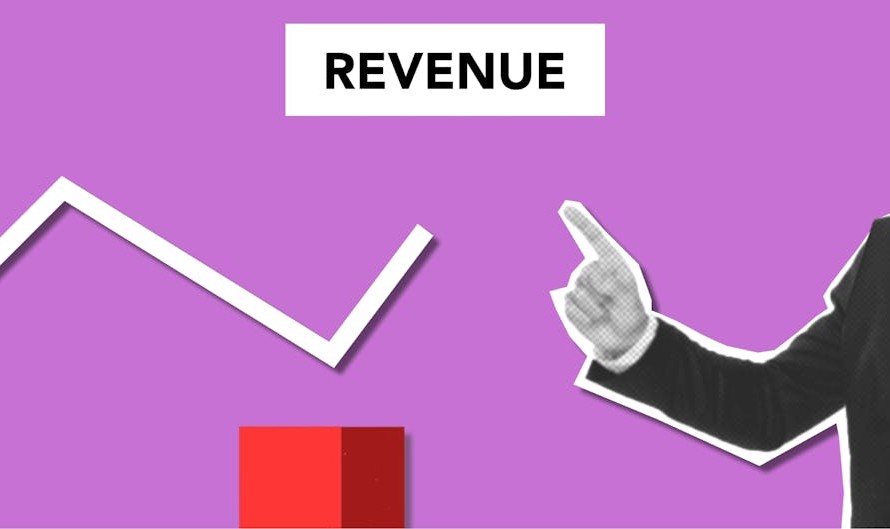Business performance dashboard software is essential for any small business owner who wants to make smarter, data-driven decisions. These tools let you track key performance indicators (KPIs) through interactive charts and graphs, making it easier to understand your business’s health at a glance.
Here’s how business performance dashboard software can help you:
- Track crucial metrics: Monitor your sales, expenses, and customer behavior in real-time.
- Visualize data easily: Use sleek graphs and charts to turn data into actionable insights.
- Improve decision-making: Make informed choices based on data, not guesswork.
- Boost efficiency: Save time by consolidating information from different sources into one view.
As a small business owner, imagine having a single screen showing your most important metrics, updating in real-time. No more digging through spreadsheets or waiting for monthly reports.
I’m Russell Rosario, co-founder of Profit Leap, where we aim to empower small business owners with essential insights through intuitive dashboard software. With my background as a fractional CFO and CPA, I’ve helped many businesses open up the power of data to fuel their growth and success.

Understanding Business Performance Dashboard Software
What is Business Performance Dashboard Software?
Business performance dashboard software is a tool that helps businesses monitor and visualize their key performance indicators (KPIs) in a centralized location. It consolidates data from various sources and presents it in an easy-to-understand format using interactive charts and graphs.
Imagine having a single interface where you can see all your critical metrics at a glance. This is what a business performance dashboard offers. It transforms complex data into visual insights, making it easier for you to track your business’s health and make informed decisions.
Key Components:
– KPI Dashboard: Displays key performance indicators in a visual format.
– Interactive Charts and Graphs: Helps in understanding data trends and patterns.
– Data Analytics and Visualization Tools: Enables deeper analysis of business metrics.
Key Features of Business Performance Dashboard Software
A robust business performance dashboard software should include several essential features to ensure it provides valuable insights and improves decision-making.
1. Real-Time Monitoring
Real-time monitoring is crucial for making timely decisions. With this feature, your dashboard updates automatically as new data comes in, giving you the most current view of your business metrics.
2. Customizable Dashboards
Every business is unique, and so are its needs. Customizable dashboards allow you to tailor the layout, metrics, and visuals to fit your specific requirements. This ensures that you’re seeing the information that matters most to your business.
3. Data Integration
Effective dashboard software should integrate seamlessly with various data sources, such as CRM systems, spreadsheets, and other business tools. This ensures that all your data is consolidated in one place for a comprehensive view.
4. AI Features
Advanced AI capabilities can provide predictive analytics and automate insights. This helps in identifying trends and potential issues before they become significant problems.
5. Drill-Downs
Drill-down capabilities allow you to click on a data visualization to get more detailed information. This feature is essential for exploring the underlying data and understanding the root causes of trends.
6. Interactive Visualizations
Interactive visualizations, such as charts and graphs, make it easier to understand complex data. These tools help you spot trends, patterns, and anomalies quickly.
Key Benefits:
– Improved Decision-Making: By visualizing data in real-time, decision-makers can act swiftly and accurately.
– Improved Transparency: Sharing dashboards across teams promotes transparency and accountability.
– Increased Efficiency: Automating data collection and visualization saves time and reduces errors.
– Motivated Teams: Displaying KPIs publicly can motivate teams to achieve their targets.
By leveraging these features, businesses can create a comprehensive view of their performance, enabling them to stay on top of their goals and make informed decisions.
How to Create an Effective Business Performance Dashboard
Creating an effective business performance dashboard involves careful planning and execution. Here’s how to do it right.
Define Your Purpose and Audience
Start with a clear purpose. Are you tracking sales performance, customer satisfaction, or operational efficiency? Define your business goals and strategic objectives. Understand who will use the dashboard—executives need high-level KPIs, while managers might need detailed data.
Choose Your Data Sources and Metrics
Identify where your data will come from. CRM systems, financial software, and marketing tools are common sources. Integrate data from these sources to build a comprehensive view. Choose key performance indicators (KPIs) that align with your goals. Make sure metrics are specific, measurable, and actionable.
Design Your Layout and Visuals
Use charts, graphs, and widgets to make data easy to understand. Bar charts are great for comparing categories, while line charts show trends over time. Keep the design simple and focused on key metrics. Ensure the dashboard is visually appealing and easy to read.
Test and Refine Your Dashboard
Once your dashboard is designed, gather user feedback. Test it for performance and usability. Make iterative improvements based on feedback. Ensure your data is up-to-date with real-time updates to reflect current trends and challenges.
By following these steps, you can create a business performance dashboard that provides actionable insights and supports your decision-making process. Next, we’ll explore the benefits of using business performance dashboard software.
Benefits of Using Business Performance Dashboard Software
Using business performance dashboard software can transform how you manage and grow your business. Here’s how:
Improved Decision-Making
Data-driven decisions are more accurate and reliable. Dashboards compile all your key metrics in one place, making it easy to spot trends, patterns, and anomalies. This helps in strategic planning and making informed choices.
For example, at Austin Capital Bank, using interactive Liveboards led to a 50% reduction in paid search spend and improved the bank’s revenue margin by roughly 30%. This kind of impact is possible when you have real-time, drillable insights at your fingertips.
Improved Collaboration
Dashboards foster team sharing and report generation. Everyone can access the same data, leading to more informed discussions and better communication.
For instance, marketing teams can use dashboards to track campaign performance and share insights with sales teams, ensuring everyone is aligned. This accessibility improves data accessibility and makes collaboration seamless.
Real-Time Monitoring and Alerts
Real-time data is crucial for proactive management. Dashboards provide instant notifications and alerts, helping you detect problems early.
Imagine getting an alert when sales drop below a certain threshold. You can act immediately, rather than waiting for a monthly report. This kind of problem detection ensures you’re always on top of your business metrics.
By leveraging these benefits, business performance dashboard software can significantly boost your efficiency, collaboration, and decision-making capabilities.
Next, let’s tackle some frequently asked questions about business performance dashboard software.
Frequently Asked Questions about Business Performance Dashboard Software
What is the best software to create a dashboard?
When choosing the best software to create a business performance dashboard, consider your specific needs. The right tool should offer interactive charts, graphs, and easy data integration.
For example, Profit Leap’s dashboard software is excellent for in-depth data analytics and real-time insights. It offers a user-friendly interface and robust data visualization capabilities. Another great option is to explore other business intelligence tools that provide intuitive drag-and-drop interfaces and powerful analytics features.
The best software will depend on your business size, budget, and specific KPIs you need to track.
What are the tools and skills needed to create an effective performance dashboard?
Creating an effective performance dashboard involves several key steps and tools:
- Define Your Purpose and Audience: Understand what you want to achieve and who will use the dashboard.
- Choose Your Data Sources and Metrics: Integrate data from reliable sources and select relevant KPIs.
- Design Your Layout and Visuals: Use charts, graphs, and widgets to make the data easily understandable.
- Test and Refine: Continuously improve based on user feedback and performance tracking.
You’ll need skills in data analysis, visualization, and business intelligence tools. Platforms like Profit Leap offer AI capabilities and collaboration features, making it easier to design and share dashboards.
Why should I use business performance dashboard software?
Using business performance dashboard software offers several benefits:
- Performance Tracking: Keep an eye on key metrics in real-time.
- Data-Driven Decisions: Make informed choices based on accurate data.
- Efficiency: Automate data collection and visualization, saving time.
- Real-Time Insights: Get instant notifications and alerts to stay proactive.
For example, dashboards can help you spot trends and anomalies quickly, allowing for proactive management. This leads to better strategic planning and improved overall business performance.
By leveraging the right tools and skills, business performance dashboard software can significantly improve your decision-making, collaboration, and efficiency.
Conclusion
Choosing the right business performance dashboard software is crucial for making informed decisions and driving growth. At Profit Leap, we combine our expertise in business intelligence with cutting-edge AI to offer custom solutions for small business owners.
Our unique selling point is Huxley, the first AI business advisor designed to provide customized business metrics and feedback. Huxley helps businesses turn complex data into clear, actionable insights, enabling you to make data-driven decisions with ease.
Why Profit Leap?
-
Custom Dashboards: We understand that every business is unique. Our dashboards are customized to reflect your specific needs and goals, providing a real-time view of your data.
-
AI-Powered Insights: With Huxley, you get predictive analytics and intelligent recommendations, helping you anticipate future trends and make proactive decisions.
-
Improved Collaboration: Our dashboards are designed to be highly interactive, allowing you and your team to drill down into different data layers, examine various scenarios, and share insights effortlessly.
-
Real-Time Monitoring: Stay ahead of the curve with instant notifications and real-time updates, ensuring you can react quickly to changes in your business environment.
Transform Your Business Intelligence
By leveraging Profit Leap’s advanced tools and AI capabilities, you can transform your data into a powerful asset. Our custom dashboards not only make your data visually appealing but also highly interactive, allowing you to gain deeper insights and drive better business decisions.
Find how Profit Leap can revolutionize your business intelligence strategy. Visit our Success Dashboard page to learn more and get started today.
Let’s harness the full potential of your data to drive growth and innovation together.


